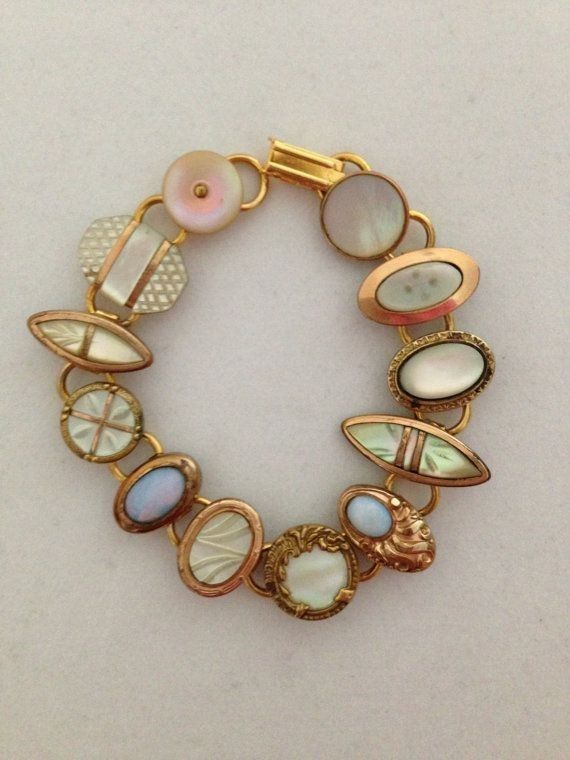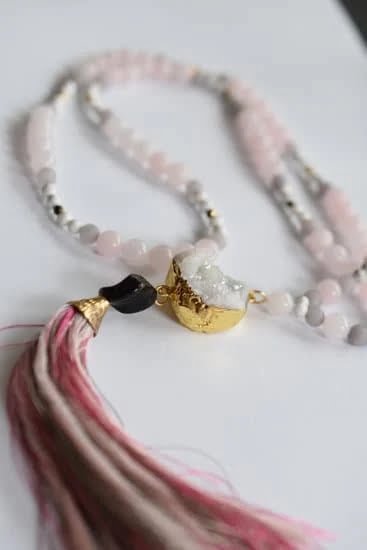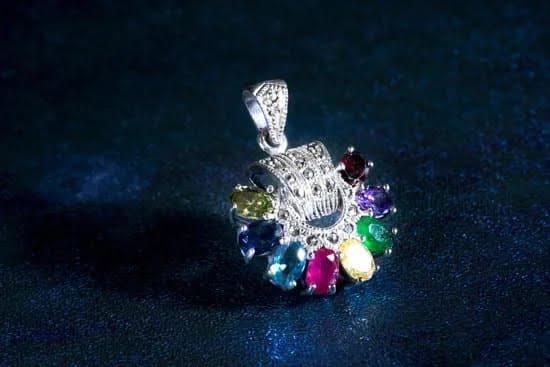Gold plated jewelry has become increasingly popular in the fashion industry, offering a luxurious appearance at a more affordable price compared to solid gold pieces. Many individuals are drawn to the allure of gold plated jewelry for its aesthetic appeal and versatility in accessorizing various outfits. However, there is often confusion regarding how to care for gold plated jewelry, particularly when it comes to exposure to water.
Can gold plated jewelry get wet without causing damage? This question is among the many concerns that enthusiasts of this type of jewelry may have.
In understanding the concept of gold plated jewelry, it is essential to comprehend the process involved in creating such pieces and the materials used. Gold plating involves applying a thin layer of gold onto a base metal, typically through electroplating.
This results in a piece of jewelry that exhibits the lustrous beauty of gold while being more budget-friendly. Despite its elegant appearance, there are factors that can affect the durability and lifespan of gold plated jewelry, including exposure to water.
Debunking myths and addressing misconceptions about the impact of water on gold plated jewelry is crucial in ensuring its longevity. It’s important to examine how water can potentially damage gold plated jewelry and how individuals can prevent such effects.
Additionally, practical tips for wearing gold plated jewelry in water activities can help maintain its quality and preserve its appeal over time. Understanding these considerations is essential for anyone who wishes to enjoy their gold plated jewelry without compromising its condition.
What Is Gold Plated Jewelry
Gold plated jewelry has become increasingly popular in the fashion industry due to its affordability and aesthetic appeal. Understanding the process of creating gold plated jewelry and the materials involved is essential for anyone looking to invest in or maintain this type of piece. Gold plated jewelry begins with a base metal, such as brass or copper, which is then coated with a thin layer of gold through electroplating.
The Process of Creating Gold Plated Jewelry
Electroplating involves immersing the base metal into a solution containing dissolved gold ions, along with an electric current. This process causes the gold ions to adhere to the surface of the base metal, creating a thin layer of gold plating. The thickness of this layer can vary depending on the quality and cost of the jewelry.
The Materials Involved
As mentioned earlier, base metals like brass or copper are commonly used in the production of gold plated jewelry. These metals are chosen for their affordability and durability. Additionally, higher quality gold plated jewelry may use a thicker layer of gold plating or incorporate additional protective coatings to increase its longevity.
Understanding the process and materials involved in creating gold plated jewelry can help individuals make informed decisions when purchasing these pieces. It also provides insight into how to properly care for and maintain gold plated jewelry to ensure its lasting beauty and luster.
Can Gold Plated Jewelry Get Wet
Gold plated jewelry is a popular choice in the fashion industry due to its affordability and versatility. It consists of a base metal, such as brass or copper, that has been coated with a thin layer of gold. This process gives the jewelry the appearance of solid gold at a fraction of the cost. However, one common question that arises is whether gold plated jewelry can get wet without being damaged.
Debunking the myth that gold plated jewelry cannot get wet is essential in understanding how to care for this type of jewelry properly. The truth is that while gold plated jewelry can withstand some exposure to water, it is not completely immune to damage. Factors such as the quality of the plating and the length of time spent in water can affect its durability.
Effects of water on gold plated jewelry:
– Tarnishing: Prolonged exposure to water can cause the thin layer of gold on the jewelry to tarnish and lose its luster.
– Corrosion: Water can also lead to corrosion of the base metal, which may eventually affect the integrity of the plating.
– Fading: The chemicals in water, such as chlorine or salt, can contribute to the fading of gold plated jewelry over time.
Tips for wearing gold plated jewelry in water:
1. Limit exposure: Avoid wearing gold plated jewelry while swimming, showering, or participating in water activities.
2. Dry properly: After coming into contact with water, ensure that the jewelry is dried thoroughly before storing it.
3. Sealants: Applying a clear nail polish or sealant to areas that come into direct contact with skin moisture could help protect the plating from water damage.
Proper care and maintenance are crucial for extending the lifespan of gold plated jewelry, especially when it comes to preventing damage from water exposure. By understanding these factors and following practical tips for wearing and caring for gold plated jewelry, individuals can enjoy their favorite pieces for years to come.
Effects of Water on Gold Plated Jewelry
Gold plated jewelry is a popular choice for accessorizing due to its affordability and attractive appearance. However, one question that often arises is whether gold plated jewelry can get wet without sustaining damage. To better understand the effects of water on gold plated jewelry, it is essential to delve into the potential damage caused by water exposure and how to prevent it.
1. Tarnishing: When gold plated jewelry comes into contact with water, the metal underneath can react to the moisture in the air or water, causing tarnishing over time.
2. Corrosion: Water exposure can lead to corrosion in gold plated jewelry, especially if it contains metals such as copper or nickel. This can result in discoloration or deterioration of the outer layer of gold.
3. Peeling: Prolonged exposure to water can cause the thin layer of gold plating to peel off, revealing the base metal underneath.
Preventing damage caused by water exposure:
– Remove before swimming: Avoid wearing gold plated jewelry while swimming in pools or saltwater as chlorine and salt can have damaging effects on the plating.
– Keep dry: After coming into contact with water, make sure to thoroughly dry your gold plated jewelry using a soft cloth to prevent any potential damage from moisture.
While it’s important to take precautions when exposing gold plated jewelry to water, understanding these effects and preventive measures can help maintain its quality for longer periods.
Proper care and maintenance are crucial for extending the lifespan of gold plated jewelry. By following these tips and being mindful of how water exposure can affect this type of jewelry, you can ensure that your pieces retain their beauty and shine for years to come.
Tips for Wearing Gold Plated Jewelry in Water
Gold plated jewelry is undoubtedly a popular choice in the fashion industry, offering a luxurious look at an affordable price. However, one of the common concerns among wearers is whether gold plated jewelry can withstand exposure to water. While it may seem risky to wear gold plated jewelry while engaging in water activities, there are practical tips and precautions that can help maintain the quality and durability of these accessories.
Choose the Right Type of Jewelry
When planning to wear gold plated jewelry in water, it’s essential to consider the type of piece you’ll be wearing. Certain items, such as rings or bracelets, are more likely to come into contact with water compared to necklaces or earrings. Therefore, choosing pieces that are less prone to direct contact with water can reduce the risk of damage.
Apply Protective Coating
To add an extra layer of protection to your gold plated jewelry, consider using a clear nail polish or specialized jewelry sealant on the parts that are most likely to get wet. This additional coating can act as a barrier against moisture and prevent tarnishing or discoloration caused by water exposure.
Dry Thoroughly and Store Properly
After coming into contact with water, it’s crucial to thoroughly dry your gold plated jewelry before storing it. Use a soft cloth to gently wipe off any moisture and ensure that no water residue is left on the surface. Additionally, store your jewelry in a dry place away from direct sunlight and humidity to prevent any potential damage due to prolonged exposure to moisture.
By following these practical tips for wearing gold plated jewelry in water, you can ensure that your beloved accessories retain their quality and shine even when exposed to water activities. Proper care and maintenance play a significant role in prolonging the lifespan of gold plated jewelry and preserving its aesthetic appeal for years to come.
Proper Care and Maintenance
Gold plated jewelry has become increasingly popular in the fashion industry due to its affordability and versatility. However, one common concern among jewelry enthusiasts is whether gold plated jewelry can get wet without losing its luster.
When it comes to the question “can gold plated jewelry get wet?” the simple answer is yes, but with some precautions. Gold plated jewelry consists of a thin layer of gold applied to a base metal such as silver or brass through electroplating. While this layer of gold may be resistant to tarnishing and corrosion, it is not waterproof. Exposure to water and moisture can cause the metal underneath to tarnish, leading to discoloration and a decrease in shine.
The key factor that affects the durability of gold plated jewelry when exposed to water is the quality of the plating. Higher-quality, thickly plated pieces are generally more resistant to water damage compared to thinly plated ones. Additionally, the type of base metal used influences how well the piece can withstand water exposure. For instance, sterling silver-based gold-plated jewelry tends to handle moisture better than brass-based pieces.
| Factor | Influence on Durability |
|---|---|
| Quality of Plating | Determines resistance to water damage |
| Type of Base Metal | Affects how well it withstands moisture exposure |
Common Misconceptions About Gold Plated Jewelry and Water
Gold plated jewelry is a popular accessory in the fashion industry due to its affordability and versatility. However, there are many misconceptions surrounding the care and maintenance of gold plated jewelry, particularly when it comes to exposure to water. One common question that often arises is, “Can gold plated jewelry get wet?” The answer to this question lies in understanding the nature of gold plated jewelry and how it reacts to water exposure.
Contrary to popular belief, gold plated jewelry can indeed be exposed to water without immediately losing its luster. The key factor that determines the durability of gold plated jewelry when wet is the quality of the plating.
High-quality gold plating is more resilient and less susceptible to tarnishing or discoloration when in contact with water. Additionally, factors such as the thickness of the gold plating and the base metal used in the jewelry also play a crucial role in determining how well it withstands water exposure.
While gold plated jewelry can withstand occasional exposure to water, prolonged or frequent contact with water can lead to damage over time. Water, especially chlorinated or saltwater, can cause the thin layer of gold plating to wear off more quickly, exposing the base metal underneath. This can result in tarnishing, discoloration, and a diminished appearance of the jewelry.
Overall, wearing gold plated jewelry in water should be done with caution and proper care. By following specific tips for maintaining gold plated jewelry while engaging in water activities, you can prolong its lifespan and preserve its shine.
| Myth | Fact |
|---|---|
| Gold plated jewelry cannot get wet | High-quality gold plating can withstand occasional exposure to water |
| All types of water have the same effect on gold plated jewelry | Prolonged exposure to chlorinated or saltwater can cause damage |
| Gold plated jewelry requires no special care when worn in water | Following specific tips for maintenance can help preserve its shine |
Conclusion
In conclusion, the question “Can gold plated jewelry get wet?” is one that many people have been curious about, especially considering the popularity of this type of jewelry in the fashion industry.
As we have learned, gold plated jewelry can indeed come into contact with water, but it is important to understand the factors that can affect its durability when exposed to moisture. By debunking myths and addressing common misconceptions, we have gained a better understanding of how to care for gold plated jewelry in order to enjoy it for a long time.
We now understand that while water exposure can potentially cause damage to gold plated jewelry, there are steps that can be taken to prevent this from happening. By following practical tips for wearing gold plated jewelry in water and properly caring for it through cleaning and storage, it is possible to prolong its lifespan and maintain its quality.
It is crucial for individuals to be aware of these measures in order to preserve the beauty and integrity of their gold plated pieces.
Ultimately, knowing how to care for gold plated jewelry is essential for anyone who wishes to incorporate these stunning accessories into their daily wear. By staying informed about the materials involved in creating gold plated jewelry and understanding how water exposure can impact its durability, individuals can confidently enjoy their favorite pieces without worrying about potential damage. With proper care and maintenance, gold plated jewelry can continue to make a stylish statement for years to come.
Frequently Asked Questions
Is It OK to Shower With Gold Plated Jewelry?
Showering with gold-plated jewelry is not recommended, as the water and soap can cause the plating to wear off faster. It’s best to remove any jewelry before showering to prolong its durability and shine.
Is Water Bad for Gold Plated Jewelry?
Water can indeed be bad for gold-plated jewelry, as it can cause the plating to tarnish or wear off over time. It’s important to keep gold-plated jewelry dry and away from water to maintain its appearance.
Can I Wear Gold Plated Everyday?
While you can wear gold-plated jewelry every day, it’s essential to take proper care of it. Avoid exposing it to water, chemicals, or harsh conditions that could damage the plating. With gentle handling and regular cleaning, gold-plated jewelry can be worn daily and still look great.

Welcome to my jewelry blog! My name is Sarah and I am the owner of this blog.
I love making jewelry and sharing my creations with others.
So whether you’re someone who loves wearing jewelry yourself or simply enjoys learning about it, be sure to check out my blog for insightful posts on everything related to this exciting topic!





